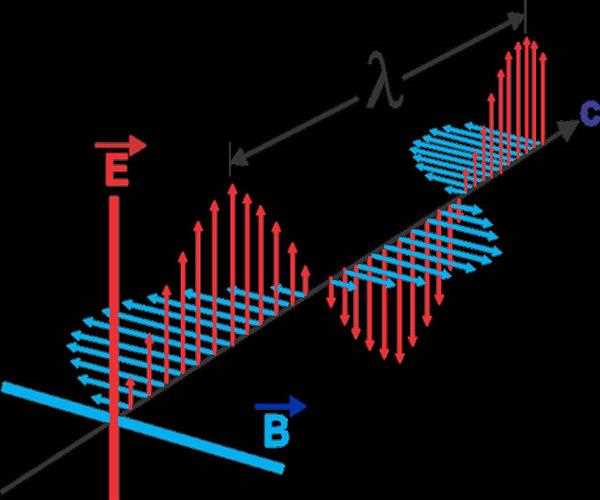Are you looking to implement wavelength services in your company? Data-intensive applications require high-tech wavelength services to ensure efficiency and effectiveness. However, your organization’s infrastructure may limit you to specific bandwidths.
Keep reading to learn more about waves, wavelength services, and how to calculate your wavelength service capability.
What Are Waves?
A wave is a variation that transfers energy from one point to another in a medium. Waves are a part of the electromagnetic spectrum and manifest as a repeating pattern of peaks and valleys.
Data transfer applications rely on radio waves, which have the longest wavelength in the electromagnetic spectrum. Radio waves can be 1mm (0.04in.) to 100km (62mi) long. As such, engineers use these waves for communication across long distances.
A transmitter generates a radio wave. The wave then travels to a receiver that detects it. The radio transmitter uses an antenna to send this energy out for the receiver to gather.
Generally, transmitters and receivers operate with limited frequencies to avoid detecting unnecessary information.
Dense Wavelength Division Multiplexing
Dense wavelength division multiplexing (DWDM) technology involves fiber-optic transmission. It uses light wavelengths to transfer data in a serial-by-character or parallel-by-bit manner.
This technology lets you deliver multiple high-capacity circuits over one pair of fibers.
DWDM lets service providers support technologies like email and video. These things get transferred as internet protocol (IP) data across asynchronous transfer mode (ATM). Voice travels over synchronous optical networking/synchronous digital hierarchy (SONET/SDH).
IP, ATM, and SONET/SDH offer separate bandwidth measurement capabilities. With DWDM, you can transport all three in an optical layer. This technology expands the number of services a provider can deliver to respond to customer demands.
What is Wavelength Services?
Wavelength services are high-capacity bandwidth connections that transfer data over fiber-optic lines. Companies involved in wholesale Internet access, telecommunications, and ISP services use them.
Wavelength services meet customer needs like:
- File sharing
- Video
- Data backup
- VPN access
- Web hosting
- VOIP
You can get wavelength services at speeds between 1Gbps and 100Gbps.
Capacity
The capacity is the number of data units that can transfer in one fiber pair.
DWDM expands the capacity of embedded fibers by assigning incoming signals to frequencies in a specific band. Then, the resulting signals get multiplexed onto a fiber.
Multiple optical signals are combined and amplified as one group. This group gets transported over one fiber to expand the capacity.
Each signal can travel at a different speed and format. Generally, you measure the rate in gigabytes per second (Gbps). Typical capacities are:
- 1
- 2
- 5
- 10
- 100
While most service providers do not offer more than 100Gbps, the technology exists for capacities of 200 and 400Gbps. At 400Gbps, you could transmit 90,000 encyclopedias in a second.
Also, Read : Which kind of waves are used by RADAR?
Bandwidth
Bandwidth is the amount of data you can transfer from point to point in a network in a defined period. Generally, you express bandwidth as a bitrate in bits per second (bps). It considers a connection’s transmission capacity.
Wavelength services provide the bandwidth necessary for data transfer services. You should think about bandwidth to determine the speed and quality of a network or internet connection.
You will typically pay for a specific amount of bandwidth. If you reach the limit, your account will get blocked unless you pay for more.
If you opt for a burstable option, you will get a wave of something like 10Gbps. Then, you commit to use and pay for a smaller amount, such as 5Gbps.
This way, your company has access to 10Gbps at a lower cost as long as your average monthly usage remains under 5Gbps. When you exceed 5Gbps, you will pay an overage rate.
Burstable options are great choices for companies that want high speeds but only operate during limited hours.
Interfaces
Since you have high-capacity waves, the electrical interface services can be handed off with multimode fiber (MMF) or single-mode fiber (SMF) from a network interface device (NID). Your wavelength service provider will likely follow one of these specifications:
- Fiber Channel: 1.062, 2.125, 4, or 10 (Gbps)
- Ethernet: 1Gbps, 10 Gbps LAN PHY, 10Gbps WAN PHY, 100Gbps
- SONET: OTN OTU-1, -2, -3, or -4; OC-48 or -192
Service Level Agreements
Wavelength services use Service Level Agreements (SLAs), which are contracts that define the amount of service that a technology solutions provider (TSP) must provide the customer.
If the TSP does not match these requirements, they face a penalty. Common penalties are prorated refunds and service credits.
Usually, your wavelength service provider will have an availability SLA of 99.9% or higher. This statement means that you should have access to your high-capacity bandwidth 99.9% of the time.
Also, many carriers have SLAs for packet loss, round-trip latency, and jitter.
Protected Circuits
You could subscribe to a protected circuit with multiple paths to ensure a steady flow. In an unprotected circuit, the system may crash if the data encounters a fiber break or network issue.
How to Calculate Wavelength Service Capability
You can calculate the wavelength service capability through the data transmission rate, which is the rate at which you can exchange data between the server and recipient.
First, let’s consider the units used to represent data:
- Bits (b)
- Bytes (B) (1B = 8b)
- Kilobytes (kB) (1kB = 1,024B)
- Megabytes (MB) (1MB = 1,024kB)
- Gigabytes (GB) (1GB = 1,024MB)
- Terabytes (TB) (1TB = 1,024GB)
To calculate the transfer speed (S), divide the quantity of data (A) by the transfer time (T).
S=AT
To find the transfer time (T), divide the quantity of data (A) by the transfer speed (S).
T=AS
Lastly, you should multiply the transfer speed (S) by the transfer time (T) to find the quantity of data transferred (A).
A=ST
The rate is the transfer speed, often measured in GB per second (Gbps).
You can use this calculation to determine your requirements for a wavelength services provider or to see if they are fulfilling the SLA.
Wrapping Up
Wavelength services are excellent ways to expand the capabilities of your business. You can pay for access to high-capacity bandwidths that can fulfill the needs of your growing customer base.
You can calculate your wave services capability readily by knowing how much data you need to transfer over a specific time. From there, you can choose the best package for your company.
Also, Read : Wi-Fi 6E Technology: Faster and More Reliable Wireless Connectivity.




Leave Comment